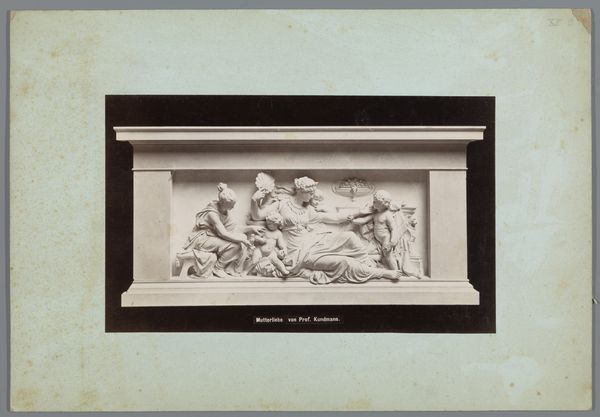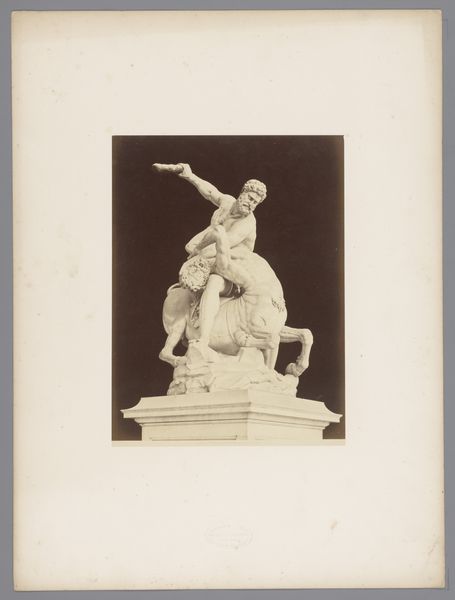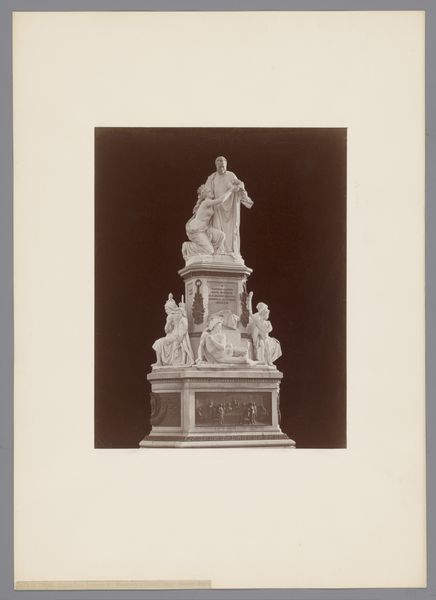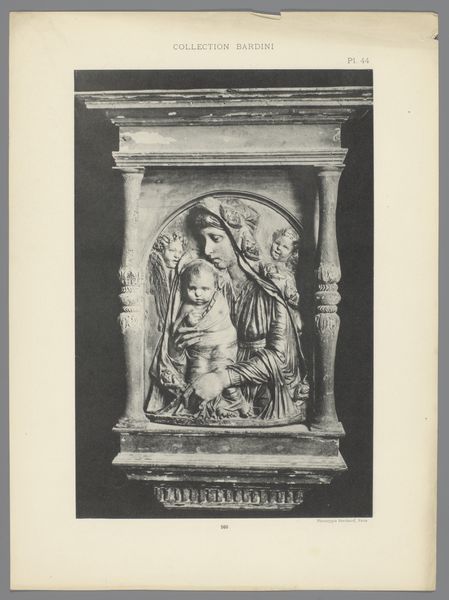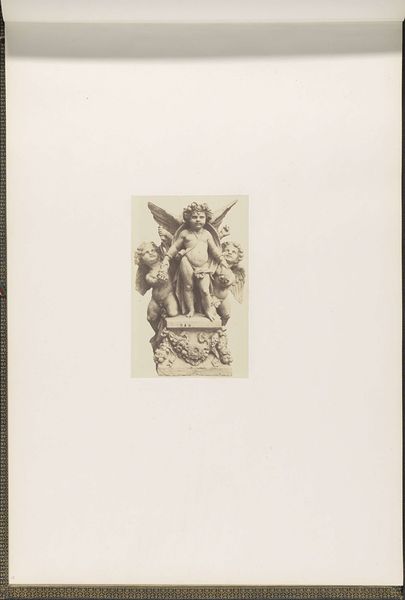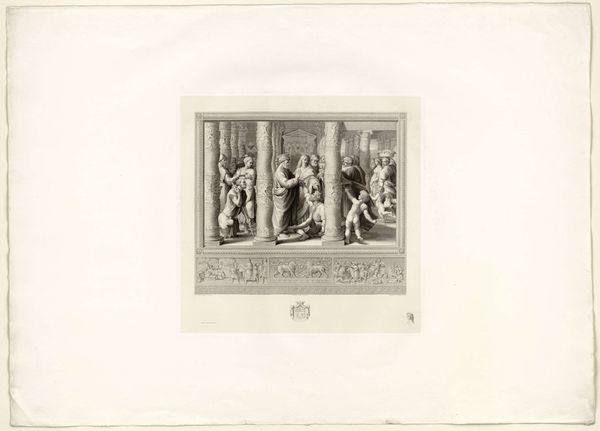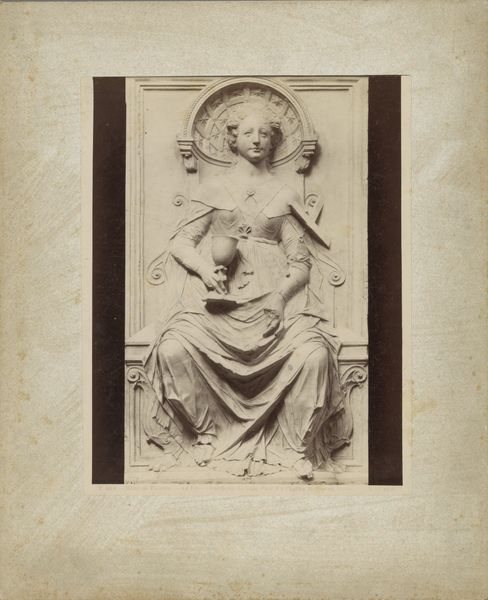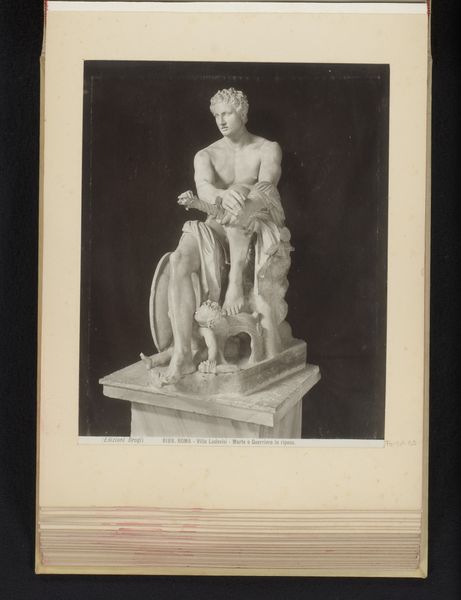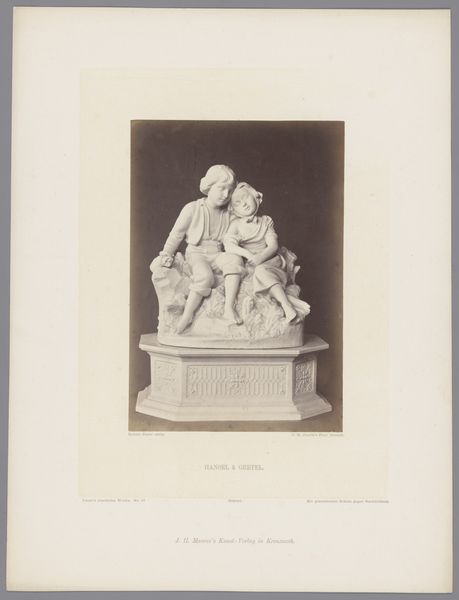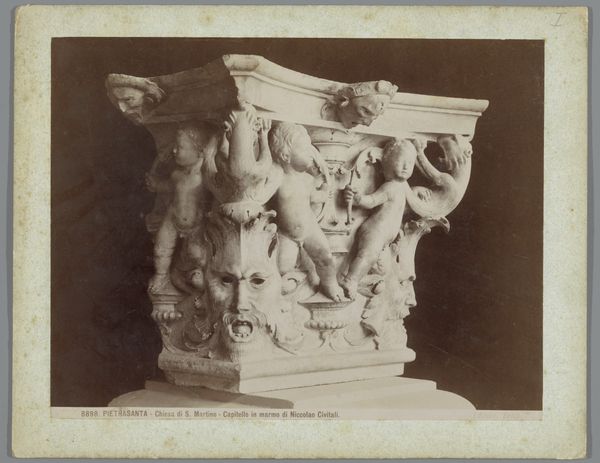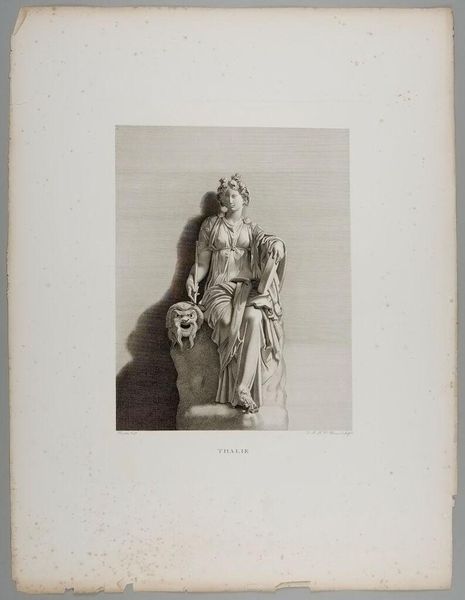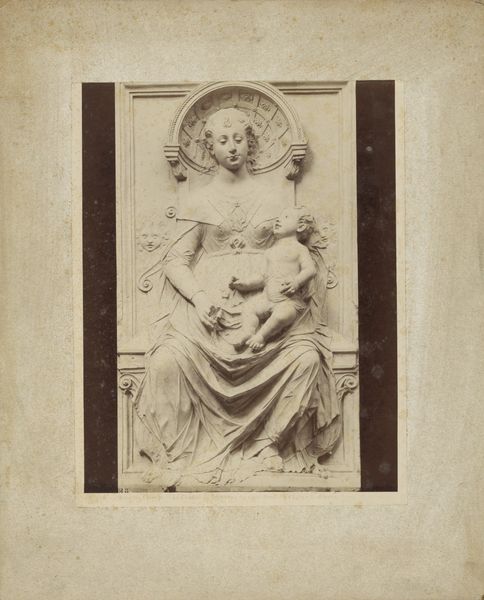
Sculptuur van een personificatie van de Nijl in de vorm van een liggende man omringd door zestien amoretten 1895
0:00
0:00
sculpture, marble
#
greek-and-roman-art
#
landscape
#
figuration
#
carved into stone
#
ancient-mediterranean
#
sculpture
#
marble
Dimensions: height 284 mm, width 429 mm
Copyright: Rijks Museum: Open Domain
Curator: Immediately, I am struck by its sheer mass. There's a heaviness, an almost slumbering energy to this marble sculpture. Editor: This is a depiction of the Nile River as a personification, sculpted around 1895. What you're observing is the artist's attempt to capture the essence of the river—a life-giving source, of course, but also a potentially dangerous force. Curator: Yes, the figure, surrounded by those sixteen amoretti… it evokes an almost classical scene, reminiscent of ancient gods and flowing abundance. Sixteen, an even number of ‘love gods’, clinging, and gesturing across this figure feels very deliberate. Editor: Absolutely, and it’s crucial to remember the context of its creation. Egypt held immense geopolitical and cultural importance during the late 19th century, the Nile was essential for European colonial interests. Personifying it, literally embodying it, was a way of possessing and understanding the river's power, of legitimizing domination of it, or in effect ‘naming’ the river. Curator: A colonial perspective firmly embedded. It speaks volumes that it’s depicted as a reclining male figure in this Graeco-Roman style. Do you think this stylistic decision implies something further? Editor: I believe the association with the imagery of ancient deities would definitely bolster European cultural claims to the area at the time. Notice the sphinx juxtaposed. Also the cornucopia. Even the small figures of amoretti indicate an abundance, of life, sustenance and love coming from the Nile itself. How it is constructed here creates an understanding to an early European audience. Curator: Indeed, and while the material permanence of marble adds to the air of enduring power, to me the almost saccharine depiction of childlike angels feels at odds with the river's true might. Is that a misreading? Editor: Not at all. I think the artist may have hoped to present a harmonious, nurturing image, but that feels almost superficial and masks the social and political realities of control and ownership behind that romantic vision. Curator: Precisely, by visually embedding cultural assumptions in the sculpture it carries forward this legacy into today’s viewing, we must examine these layers as carefully as we consider aesthetics. Editor: So, we might view the river less as benevolent entity and more as something that was fought for, negotiated, and dominated in European history, not a pure and gentle scene as one first perceives.
Comments
No comments
Be the first to comment and join the conversation on the ultimate creative platform.
